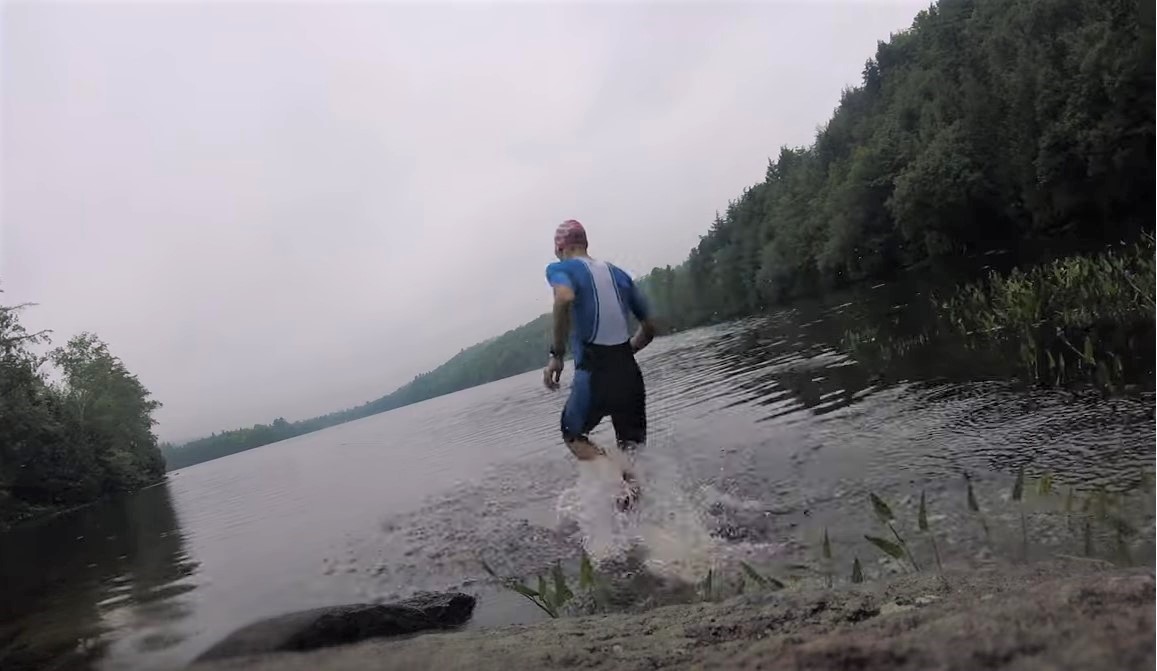The Swim Run experience
Pro triathlete Antoine Jolicoeur Desroches creates his own Swim Run event

A few days ago I did my first Swim Run event and I really enjoyed it. It is a relatively new sport – the first Swim Run race, the Ötillö, took place in 2002 in Sweden. This epic event is now the Swim Run world championship. You swim in the rough and cold sea from island to island, running across the islands. The total distance is 75 km, including 10 km of swimming and 65 km of running.
There are a lot of Swim Run events around the world – most are shorter and a bit less extreme. Unlike triathlon races, there are no Swim Run standard distances because the distance of the events depends on each course (the lengths of the lakes and of the trails). Usually a short Swim Run is around 10 to 15 km, while a long-distance swim run is longer than 20 to 25 km, divided in many segments of swimming and running.
I first learned about swim running about three years ago listening to the Rich Roll’s health podcast. Roll wrote the book Finding Ultra. He went from being sedentary and overweight to one of the fittest people on the planet. Roll completed big endurance events like the Ultraman World Championship and Epic 5 (five full-distance triathlons in five days on five different Hawaii islands). In 2017, he decided, after a few years without having taken part in a race, to give himself a challenge and to compete at Ötillö. In his podcast, he talked about his training and how the race went. It made me want to compete in a Swim Run one day.
Since most triathlons are cancelled this year, I thought I would try a Swim Run in my own backyard. There are many lakes near my house, and a lot of trails for running, so it was quite easy to map a course in my head. In total I crossed 4 lakes for a total of between three and four km of swimming, and I ran about 20 to 21 km. My entire “event” took three hours and six minutes. Because it is segmented in a lot of small swims and runs, time flew by really fast.
What is really cool about Swim Run events is that you can adapt the course depending on whether you want to swim or run more. You can also decide between doing a lot of really short swims and runs, or only a few longer swims and runs.
Equipment choices
Because you are swimming with your shoes on, you’ll end up running for a long time with wet shoes. That’s why it’s important to choose a pair of shoes that won’t get too soggy and heavy when they’re wet. Also, because you are swimming with shoes on, it is difficult to kick, so most people decide to use a pull buoy, which I did. It’s also a great way to save your legs for the run. Some people also decide to use paddles for the swim, but since you also have to carry them on the run, I decided not to use paddles.
Since it was a warm day, I decided to wear a trisuit, but in colder weather people wear a Swim Run wetsuit. Because the wetsuit legs are short, this style of suit allows you to run easily. Also, the zipper is placed in front of the wetsuit instead of at the back, which means you can unzip the suit for some added ventilation. You can even use an old wetsuit with the legs cut off so you can run more easily.
Here’s the equipment that I used for the Swim Run:
- 1 trisuit (blue seventy)
- 1 pull buoy
- 1 pair of trail running shoes (Skechers Go Run Speed TRL Hyper)
- 1 watch (Polar Grit X)
- 3 gels (Rekarb)
- 1 belt to put my gels and GoPro
- Swimming goggles and a cap
I’ll definitely do more swim runs this summer! It’s a fun way to do some swim and run training, while also providing a fun challenge.
